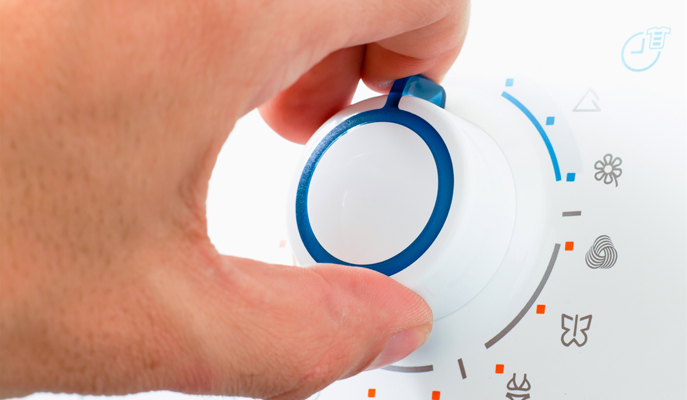SPONSORED CONTENT: By Aga Orlik, Senior Vice President, P&G North America Fabric Care
If you haven’t ever thought about climate change when doing laundry, you’re certainly not alone. But at P&G Fabric Care, we think about it constantly. P&G has a longstanding commitment to addressing climate change. And that begins with ensuring our own house is in order.
For years, we have worked diligently to make environmental responsibility an integral component of how we operate. Today, we use 100% renewable electricity in all of our Tide manufacturing facilities. And that environmental commitment transcends our entire manufacturing, production and delivery process. We continue to focus efforts on further reducing the intensity of greenhouse gas (GHG) emissions throughout our supply chain, while also building partnerships with suppliers and retailers to optimize transportation products, such as reducing the number of trucks on the roads.
When it comes to the products we sell, we’ve introduced innovations to Tide and other Fabric Care products that clean and protect clothes, while consciously weaving sustainability into the product end-to-end. A global organization of our size, scope and impact has a responsibility to do what’s right – for people and planet – at all times.

But we also have a responsibility to leverage our marketing expertise and resources to change everyday behaviors outside our direct control that collectively have huge impact on our planet – and that includes encouraging the consumers we serve to wash their clothes in the most efficient way possible.
The data shows that when it comes to GHG emissions and climate change, little actions all add up. When we look at the holistic environmental footprint of laundry – from manufacturing to end of life – we’ve found that two-thirds of the environmental impact in the laundry ecosystem occurs in the consumer use phase. This environmental impact is driven by the energy needed to power a home washing machine, and more specifically, the energy needed to heat the water in every machine wash load of laundry.
So, I hope you won’t “throw cold water” on what I’m about to share … and that is, we must all strive to wash our clothes in cold water. With respect to environmental impact, turning the dial from hot or warm to cold water is an easy way to make a positive difference in our world.
You may be wondering – how much of a difference can washing in cold water really make? The answer is: quite a lot. Moving from warm to cold water reduces the energy required for a load of laundry by 70%. And moving from hot to cold water reduces the energy required by a whopping 90%.
Put another way, by switching your wash temperatures from hot to cold, you can save enough energy in one year to drive 300 miles from Las Vegas to Los Angeles, or to charge your smartphone battery for life. Multiply that by the 40 million families who use Tide, and you’ve got a movement that can really make a load of difference.
Such a change, however, takes some convincing. People have been washing in warm or hot water for generations. That kind of ingrained mindset is hard to change.

As the producer of Tide, North America’s number one laundry detergent, and several other P&G Fabric Care brands, we have a unique opportunity and responsibility to use our size and scale as a driver of change. That includes developing innovations that enable consumers to minimize their environmental footprint at home and educating consumers about their impact and the options available to them to empower more sustainable choices. Together, we can be a force for a tremendous amount of good.
The first step toward driving behavior change to wash on cold is providing consumers with the confidence that cold water washing is as effective as it is efficient. Those efforts have manifested over many years into the development of Tide and other Fabric Care detergent products that are formulated to provide the brilliant clean consumers expect, even in cold water.
As the years have passed, we’ve further improved those formulas through innovative R&D, so consumers don’t have to make a choice between performance, their wallet or the environment.
Of course, creating a high-powered, cold water cleaning formula that delivers superior performance is only half the battle. The second step is to encourage consumers to change decades-long laundry habits through “turn to cold” educational marketing campaigns. It’s an effort that emphasizes the environmental benefits of cold water washing, while also highlighting the financial upside for families switching to cold: a lower energy bill. And with millions of households using Tide, that’s a collective savings for people and planet that adds up to a lot of positive impact.
As we roll out new educational consumer marketing campaigns, we hope to start a tide of cold water washes across the U.S. in the millions of homes that trust our products every day. Reducing our GHG emissions end-to-end to combat climate change continues to be our focus; it is critical work that begins in manufacturing, and continues each and every day in our homes when we set our wash cycle to cold.
So, please don’t “throw cold water” on turning that laundry machine dial to cold. It’s an easy way to make our planet a little healthier, one load at a time.
Aga is Senior Vice President, Fabric Care, P&G North America and oversees P&G’s leadership fabric care brands including Tide, Downy, Gain and Dreft, which enable millions of people in the U.S. to keep their homes clean and hygienic. Aga is known for effective leadership through complex organizations, strategic thinking, professional development and motivation, and adaptability, particularly in new markets and cultures. She is fluent in Polish, English and Russian.

